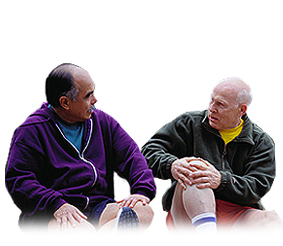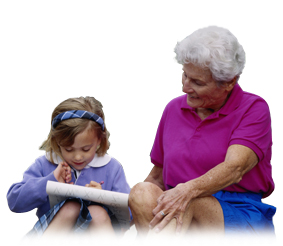Knee Pain SmartSiteTM | ||||||||||||||||||
Stay active and exerciseDescriptionBeing active is good for your overall health and well-being. People with arthritis who are active feel better than those who are not active. Exercise keeps your muscles strong and increases your range of motion. This is the amount you can bend and flex your joints. Tired, weak muscles add to the pain or stiffness that arthritis causes. Stronger muscles also help you with balance. This helps prevent falls. Being stronger can also help you lose weight, sleep better, and give you more energy. Doing exercises and being as strong as possible before surgery will speed up your recovery. Choose from these activitiesWater exercises may be the best exercise for your knee. Swimming laps, water aerobics, or walking in the shallow end of a pool all make the muscles around your spine and knees stronger. Ask your health care provider if you can use a stationary bike. If you have severe arthritis, using a bike may speed up damage to the cartilage and bone in your knee. If you are not able to do water exercises or ride a stationary bike, try walking, as long as it does not cause too much pain. Walk on smooth, even surfaces, such as the sidewalks near your home or inside a shopping mall. Ask your physical therapist or provider to show you gentle exercises to increase your range of motion and strengthen the muscles around your knees. Be carefulAs long as you don't overdo it, staying active and exercising won't make your knee arthritis become worse any faster. It's fine to take acetaminophen (Tylenol) or another pain pill before you exercise. But don't overdo your exercise, because the medicine may mask pain. If any exercise you do causes your pain to become worse later in the day, during the night, or the next day, cut back on how long or how hard you exercise the next time. | ||||||||||||||||||
| ||||||||||||||||||
Review Date: 8/9/2018 Reviewed By: C. Benjamin Ma, MD, Professor, Chief, Sports Medicine and Shoulder Service, UCSF Department of Orthopaedic Surgery, San Francisco, CA. Also reviewed by David Zieve, MD, MHA, Medical Director, Brenda Conaway, Editorial Director, and the A.D.A.M. Editorial team. View References:  The information provided herein should not be used during any medical emergency or for the diagnosis or treatment of any medical condition. A licensed medical professional should be consulted for diagnosis and treatment of any and all medical conditions. Links to other sites are provided for information only -- they do not constitute endorsements of those other sites. No warranty of any kind, either expressed or implied, is made as to the accuracy, reliability, timeliness, or correctness of any translations made by a third-party service of the information provided herein into any other language. © 1997- A.D.A.M., a business unit of Ebix, Inc. Any duplication or distribution of the information contained herein is strictly prohibited. | ||||||||||||||||||
A.D.A.M. content is best viewed in IE9 or above, Firefox and Google Chrome browser. | ||||||||||||||||||












